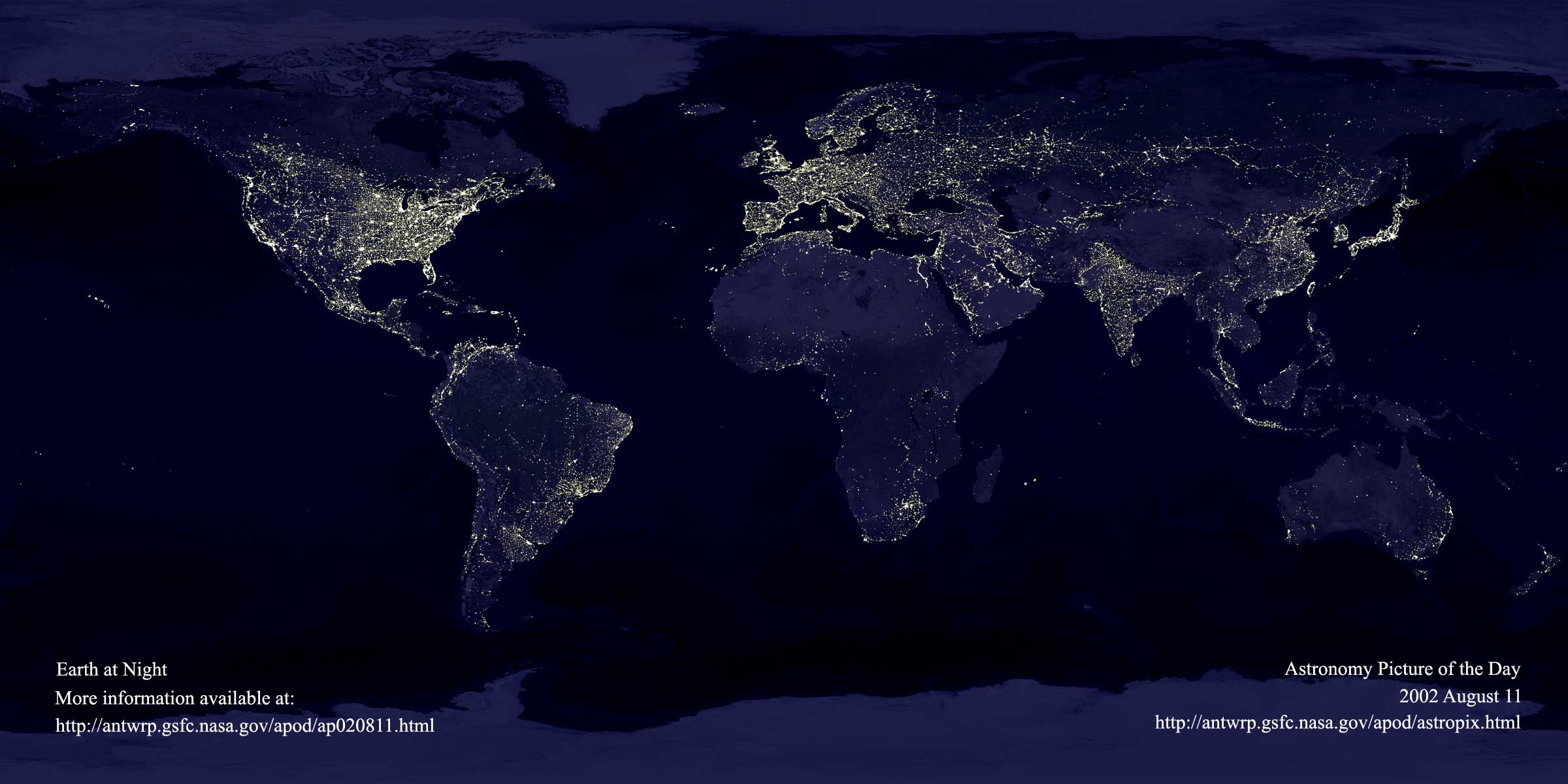 and closer to life size at http://antwrp.gsfc.nasa.gov/apod/image/0208/earthlights02_dmsp_big.jpg.
and closer to life size at http://antwrp.gsfc.nasa.gov/apod/image/0208/earthlights02_dmsp_big.jpg.Some interesting things that I notice, combining my love of geography and astronomy:
1)Look at the Nile. A ribbon of light in the otherwise dark expanse of Africa. None of the other great rivers of the world are so outlined, even the Mighty Mississippi. Also, I am surprised to see as many lights in the middle of the Sahara, relatively speaking.
2)Compare India to a big chunk of Iran and Afghanistan. Huge difference. I'm sure some of that has to do with geography, but how much of it has to do with politics and wealth?
3)The Trans-Siberian railroad sticks out like a sore thumb in the wastelands of upper Russia.
4)Even from space, the grid-like nature of middle America is easily seen.
5)Compare Cuba to Puerto Rico and even Jamaica. For having 4 times the population, Cuba's pretty dark.
6)This is the most telling part of the map/picture that I can point out. Look at Korea. Specifically the difference between North and South Korea. The border is such a distinct feature, it looks like South Korea is an island.
Another thing I'd like to point out about this picture is the staggering amount of people who, when after 9/11 happened, believed that a section of this picture(North America) was a single picture, taken from space, of people lighting candles in memory of those lost in the hijacking/bombings. This displays an ignorance about weather,(no clouds?) time,(it was supposedly taken at 10:30 PM EST, yet there's no terminator off the west coast) geography(why were Mexico and Canada, and especially Cuba lighting candles?),the amount of light cast by a single candle,(even millions of them wouldn't produce nearly as much light as is shown in those pictures) and an overall sense of self-centerdness that Americans, and humans as a more general group, have. A single human is so infintessimal on the scale of the Earth, let alone the Solar System or our galaxy, that its laughable. So with that happy note, I'll bid you adieu until next time, when I might regale you with my theory debunking the "butterfly effect". Yes, I may be mad-scientist-crazy.
(Sorry for any spelling errors, I can't get Blogspot's spell-checker to work. *pokepokepoke*)
No comments:
Post a Comment